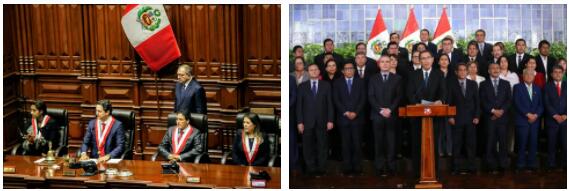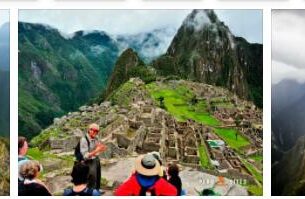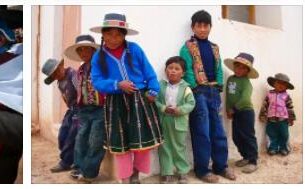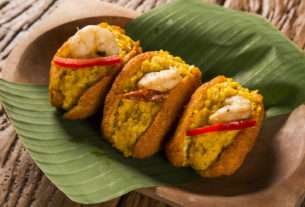The Constitution of 1993 is in force. Administratively, the country is divided into departments: Ayacucho, Amazonas, Ancash, Apurimac, Arequipa, Ica, Callao, Cajamarca, Cusco, La Libertad, Lambaeque, Lima, Loreto, Madre de Dios, Moquegua, Pasco, Piura, Puno, San Martin, Tacna, Tumbes, Huancavelica, Huanuco, Ucayali. The most important cities are: Lima, Ayacucho, Arequipa, Ica, Iquitos, Cajamarca, Cusco, Pucallpa, Piura, Suliana, Tacna, Trujillo, Huancayo, Huanuco, Juliaca, Chiclayo, Chimbote. Check diseaseslearning for political system of Peru.
Legislative power is represented by a unicameral Congress, elected for 5 years by universal secret, direct mandatory suffrage on the basis of proportional representation. The quota from each department depends on the size of its population.
Congress is engaged in legislative activity. The right of legislative initiative belongs to the deputies, the representative of the executive branch, the Supreme Court. Congress approves the state budget, loans, solves the problems of managing natural resources, ratifies international treaties, grants citizenship or restores it, determines the size of the Armed Forces, declares an amnesty.
The executive power is vested in the president along with the ministers of state. The President acts as the guarantor of the Constitution and the rule of law, appoints the Chairman of the Council of Ministers and, on the recommendation of the latter, the ministers. The President performs the functions of the Supreme Commander-in-Chief of the Armed Forces, appoints the commanders of the military branches and senior officers. A presidential candidate must be Peruvian by birth and at least 35 years of age.
The president and two vice-presidents are elected for a term of 5 years by an absolute majority of votes in a single national district. Representatives of the Armed Forces and the police have no right to participate directly or indirectly in elections. Since 2001 President of Peru. is A. Toledo Manrique.
The judiciary is autonomous. It is represented by the Supreme Court, the Constitutional Court, district and local courts, autonomous tribunals established in cases of terrorist activities. The death penalty has been abolished, with the exception of cases of treason during war and terrorist activities. Members of the Supreme and Constitutional Courts are elected by a qualified majority by Congress for 5 years without the right to re-election. The Supreme Court is the highest court that makes the final decision on the indictment of senior officials (after the preliminary opinion of Congress).
Departmental governors are appointed by the president. Elections of municipal authorities are held once every 3 years.
The system of political parties in Peru, which has developed since the 1930s. and existed until 1990, is in crisis. The administrations of A. Fujimori and A. Toledo failed to overcome it. Most of the old parties (Aprista, Popular Action, Christian Popular, United Left) continue to exist in one form or another. Of these, new parties and blocs emerged that participated in the general elections of 1995, 2000 and 2002.
The Peruvian Aprist Party was founded in 1924 as the American People’s Revolutionary Alliance. It first appeared as a political party in 1930. From 1945–77 it was officially called the People’s Party. In 1985–90 she was in power (President A. Garcia), is a member of the Permanent Conference of Political Parties of Latin America and the Caribbean and is a consultative member of the Committee of the Socialist International for Latin America and the Caribbean.
The Possible Peru Movement was created in 1999 as an electoral bloc. The leaders are A. Toledo (now the President of Peru) and H.B. Caballero. Proclaimed commitment to the idea of democratization of the political system, respect for human rights, modernization of the economy, social orientation of politics.
The Popular Action Party was founded in 1956. Its leader was F. Belaunde Terry (President of Peru from 1963–68, 1980–85). In the 1990 elections, she supported the candidacy of the writer M. Vargas Llosa for the presidency of Peru. In 1997 she was a member of the parliamentary bloc of the democratic opposition, in the elections of 2000 and 2002 she acted independently. Member of the Forum of Democratic Political Parties of Latin America and the Caribbean.
The Union for Peru was founded in 1994 as an electoral movement in support of the candidacy for the presidency of Peru, former UN Secretary General J. Perez de Cuellar. He opposed the policy of President A. Fujimori, for democratization, mitigation of neoliberal policies, for the social orientation of budgetary policy.
The Christian People’s Party was founded in 1966 on the basis of the right-wing faction of the Christian Democratic Party. Participated in the government of F. Belaunde Terry. In 1990, she supported the candidacy for the presidency of Peru from the Democratic Front of the writer M. Vargas Llosa. The leader L. Bedoya Reyes, minister of justice in 1964, mayor of Lima in 1963–64, stood in open opposition to the military regimes and the government of A. Fujimori. The party is a member of the Union of Latin American Parties.
In Peru, compulsory military service lasts 2 years (for men aged 20-25). There are 188 thousand reservists. Armed forces 125 thousand people, including: in the land army – 85 thousand, the Navy – 25 thousand, the Air Force – 15 thousand.



